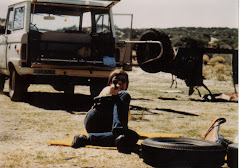
It Would Be Chaos....
When I was a young lad, in the Frozen North, there were many an hour when there wasn't much to do.....but read. There were times when I'd think up some reason to leave the (boring) classroom to go to the library and read something interesting. There were the Saturday afternoons after Howdy Doody was over, and it was too cold or there were no friends around.
Aside from Robert Heinlein's teen science fiction stories and Hot Rod magazines, my favorites were the popular tech magazines of the day. I'd gobble up Mechanix Illustrated, Popular Mechanics and Popular Science in the first days after they appeared, then go back into the archives and find old ones I hadn't already read.
One story, or rather one theme from which a number of stories emerged, was about the coming of personalized flying cars, for use by the public for the same everyday purposes for which we now use ground cars. Last May, I wrote about this briefly here.
These pop tech magazines carried stories of inventors who were experimenting with personal aircraft which could be re rigged to drive on the streets. These "aircars" were very primitive and not easily converted from air- to surface-usefulness, but they were a start. Continued experimentation would certainly have brought improvements in these vehicles. We have to recall from history that early automobiles weren't very easily used, either.
Further experimentation was not to be--at least not on a continuous basis. There are a few research groups working on the project, but bringing aircars to the general use of the public is still a long way off.
Seems the Civil Aeronautics Board (CAB), predecessor to the Federal Aviation Administration (FAA), decided that we dopey Americans aren't capable of handling flight, most of us. They halted most research into aircars on the basis that every aircar driver would have to be licensed as a private pilot--a lengthy and pricey process.
I brought all this up in a conversation with a couple of younger, tech-savvy denizens of my local coffee shop yesterday. "It would be chaos," one of them said. "When they start crashing into each other like they do on the streets, then falling down onto people's homes....hey! I'm enrolling in law school tomorrow!"
I'm a little surprised that a couple of my younger friends, each owning more hi-tech than I care to afford, would take such a skeptical view of technology that must happen if our government-stalled technological progress is to move ahead. In truth, I'm pretty sure that my two young friends will buy aircars as soon as they can afford them (after me).
The error that government keeps making that gives them an excuse to continue to squelch aircar technology (beyond the fact that government doesn't want us to have that much freedom!) is to think about safety the same way we do regarding automobiles: how to minimize the effects of a collision. Problem: at 5000 feet, it's really hard to minimize these kinds of collisions, and what they do to our bodies and those of the people on the ground. What we have to do is think like aircraft people. To them, almost all the effort goes into avoiding the collision in the first place.
What with all the radars, sonars, proximity alarms and air traffic control (which would be far better and safer if the lunkheads at FAA would get the *your favorite obscene epithet here* out of the way.
The fact that we're not all using aircars routinely now; fifty years after the earliest real experiments of which I'm aware, tells me that there's a problem with this once-free country. The problem is the government: but not for government regulation, I'm convinced that those early inventors and the like minds that would've followed them would've had us in very safe and practical aircars well before this year 2005.
They've killed Freedom! Those bastards!
Warm regards,
Col. Hogan
Stalag California






No comments:
Post a Comment